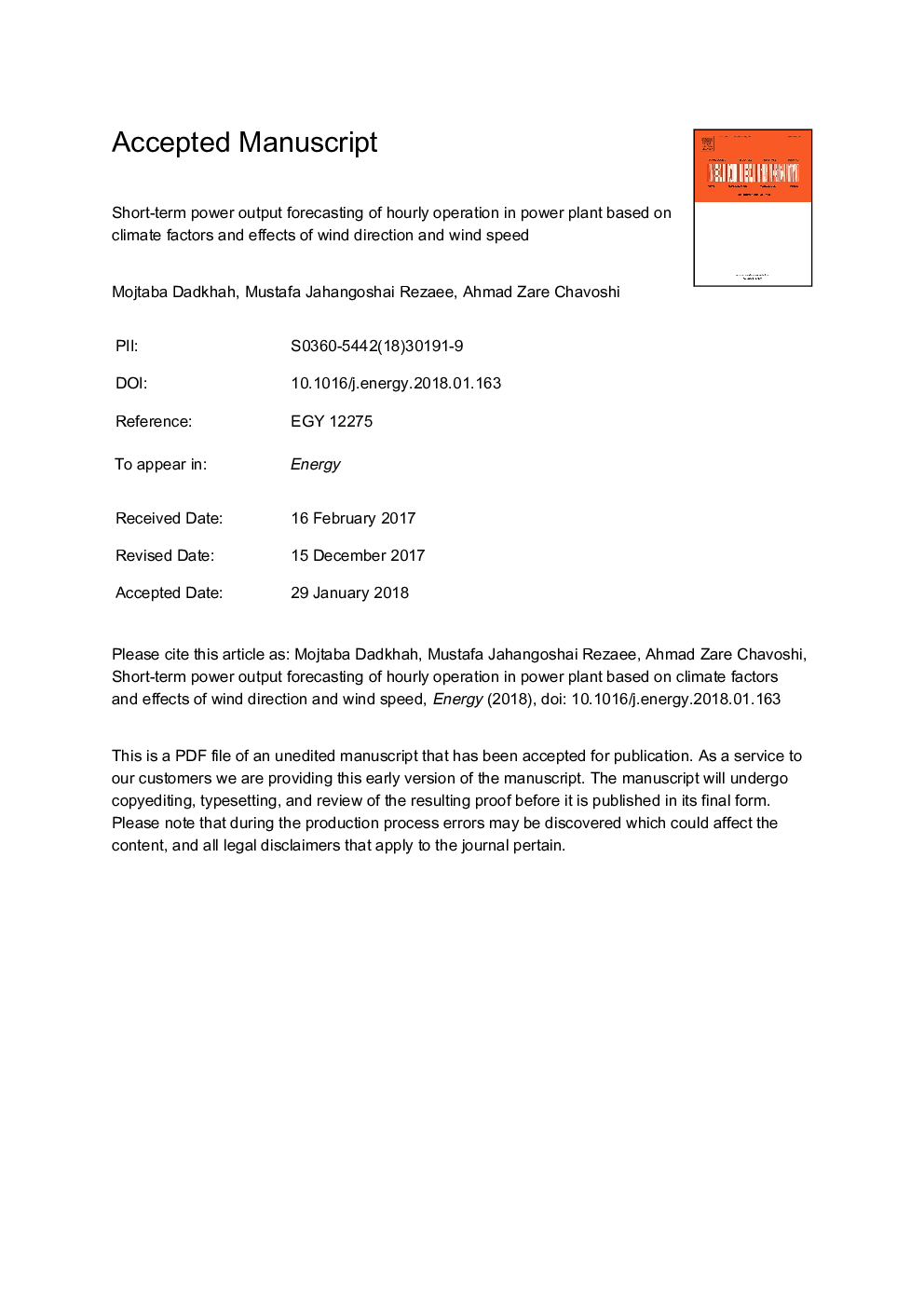| Article ID | Journal | Published Year | Pages | File Type |
|---|---|---|---|---|
| 8072052 | Energy | 2018 | 47 Pages |
Abstract
Short-term power output forecasting is a fundamental and mandatory task in the power plants. Since the restructuring and privatization of power plants in Iran are in progress, this is particularly important in the operational planning and cost control in the power plants. Numerous factors affect power output forecasting especially climate factors. In this paper, besides several climate factors, two factors including wind speed and wind direction that have been rarely considered simultaneously for power output forecasting in previous studies, have been used. These two factors have many fluctuations and usually create a significant noise in forecasting models. To illustrate this claim, the mechanical simulations are used to demonstrate the necessity of these factors for short-term power output forecasting. For this purpose, a neural network-based approach is proposed using six variables. This approach uses the mixture models of Kohonen's self-organizing map (SOM) as clustering method and radial basis function (RBF) as classification method for accurate power output forecasting in a power plant. Furthermore, the real case study in Iranian power plant is used to show the ability of the proposed approach. Furthermore, the statistical tests are provided to indicate the advantages and capabilities of the proposed approach.
Related Topics
Physical Sciences and Engineering
Energy
Energy (General)
Authors
Mojtaba Dadkhah, Mustafa Jahangoshai Rezaee, Ahmad Zare Chavoshi,
